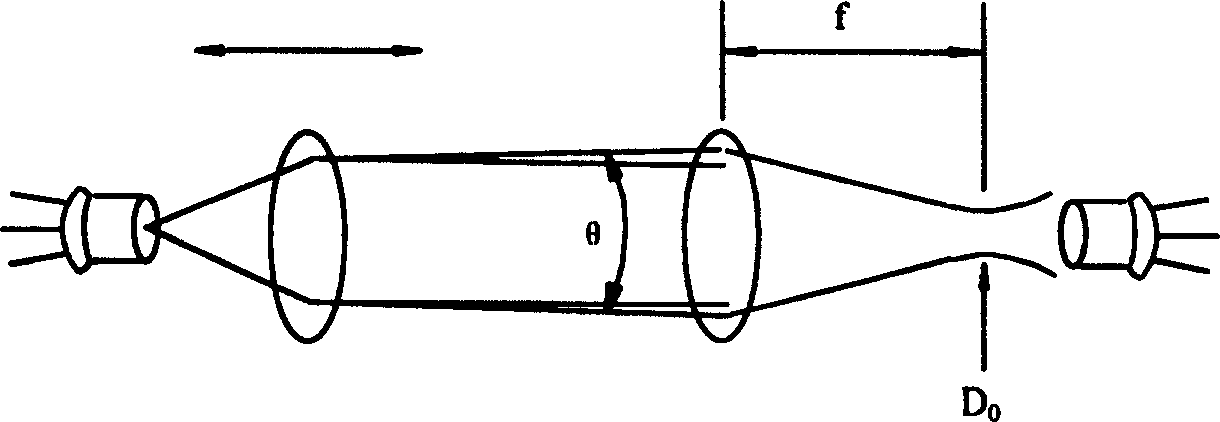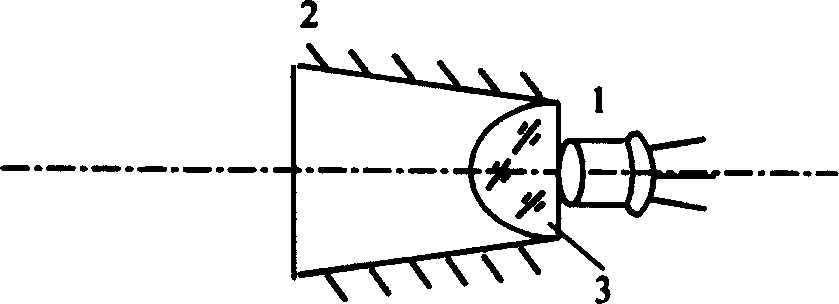Receiving antenna of optical communication system
A communication system and receiving antenna technology, applied in the field of optical communication systems, can solve the problems of difficulty in adjusting the detector and the receiving optical system, affecting the performance of the system, and being in vain, achieving simple and easy adjustment of the optical path, expanding the receiving aperture, and the ability to interfere. Enhanced effect
- Summary
- Abstract
- Description
- Claims
- Application Information
AI Technical Summary
Problems solved by technology
Method used
Image
Examples
Embodiment Construction
[0022] The receiving antenna of the optical communication system designed in the present invention, wherein the detector receiving part includes a detector 1 , a hollow light cone 2 and an immersion lens 3 . The production steps are: determine D according to the overall design requirements of the system 0 , f, θ and other parameters. press D 0 , f, θ * (the beam divergence angle after the focusing of the receiving optical system) and the size of the detector 1 are designed to manufacture the hollow light cone 2 and the immersion lens 3 . The hollow light cone 2 and the immersion lens 3 are combined, calibrated with a standard light source and fixed mechanically. The surface of the detector 1 is placed close to the rear surface of the immersion lens 3 and placed on the optical axis of the combined hollow light cone 2 and immersion lens 3, calibrated with a standard light source, bonded and cured with high refractive index glue.
PUM
 Login to View More
Login to View More Abstract
Description
Claims
Application Information
 Login to View More
Login to View More - R&D
- Intellectual Property
- Life Sciences
- Materials
- Tech Scout
- Unparalleled Data Quality
- Higher Quality Content
- 60% Fewer Hallucinations
Browse by: Latest US Patents, China's latest patents, Technical Efficacy Thesaurus, Application Domain, Technology Topic, Popular Technical Reports.
© 2025 PatSnap. All rights reserved.Legal|Privacy policy|Modern Slavery Act Transparency Statement|Sitemap|About US| Contact US: help@patsnap.com



